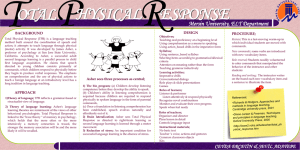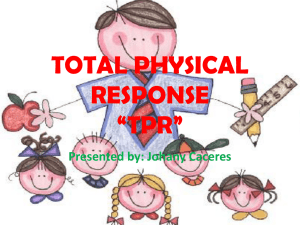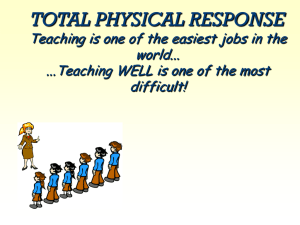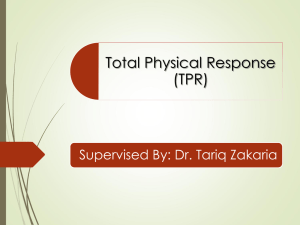Total Physical Response 學生:林佳佩 498C0130
advertisement
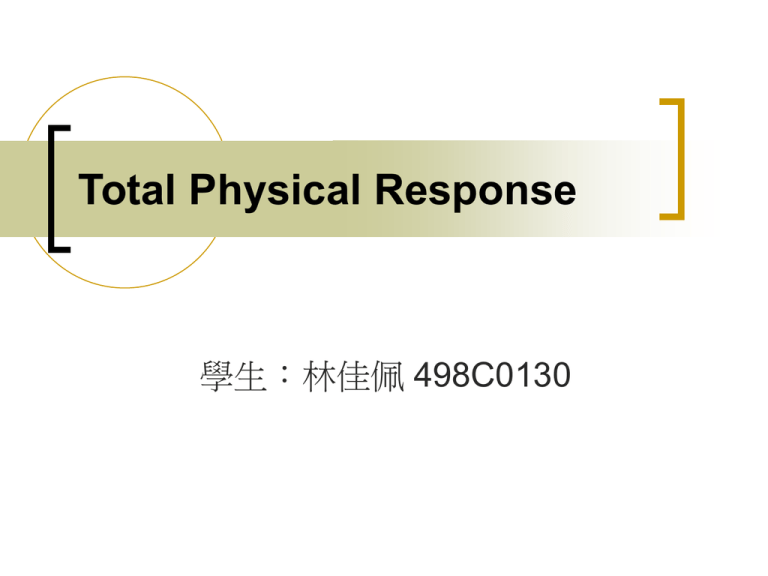
Total Physical Response 學生:林佳佩 498C0130 Total Physical Response Outlines Introduction Principles Techniques Strengths Weaknesses Activity (Identifying Parts of the Body) Introduction Comprehension Approach: The right to be silent (Silent Period). Once comprehension is established, production will come naturally. (Winitz 1981) Stress Free Environment: Creating a low affective filter Brain Lateralization: TPR is directed at right brain learning (Asher) Introduction TPR is a method built around the coordination of speech and action. It attempts to teach language through physical (motor) activity (actions). Developed by James Asher, a professor of psychology at San Jose State University, in the 1970s. Principles The role of the teacher The director of all student behavior (initially) The role of the students Imitators of the teacher’s nonverbal model. After 20 hours of instruction, students will be ready to speak. Principles The nature of student-teacher interaction T-> Ss, T-> individual students. T speaking, Ss responding nonverbally Role reversal Ss become more verbal. T responds nonverbal. The nature of student-student interaction Ss perform the actions together and learn by watching each other. Ss issue commands to other Ss as to the T. Principles The role of the students’ native language TPR is usually introduced in the students’ native language. After the introduction, the teacher uses mainly the target language in the class. Meaning is made clear through body movements. Techniques Using commands to direct behavior Role reversal Action Sequence Strengths Students acquire second language at an accelerated rate. They remember what they have learned for a long time. They don’t find second language learning stressful. Weaknesses Difficult for a teacher to use just commands and responses for an entire lesson Input restricted to imperatives Difficult to extend beyond beginner level Relevance for the real world is questionable, YET we should remember that: It was not designed for adults Can be used with other methods Motivating and useful for certain learners Activity (Identifying Parts of the Body) Simple commands Comb your hair. Brush your teeth. Touch your nose. Wiggle your toes. Count your fingers. Nod your head. Close your eyes. And go to bed. Activity (Identifying Parts of the Body) Vocabulary hair teeth nose toes fingers head eyes THANK FOR YOUR ATTANTION
